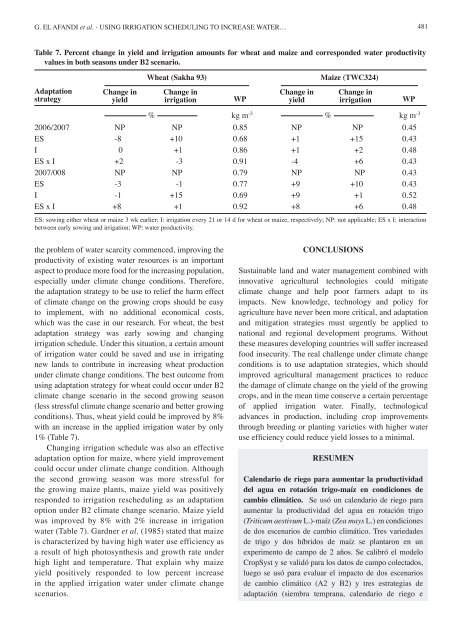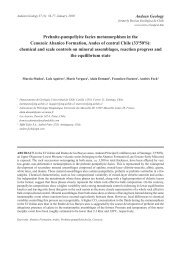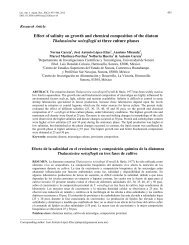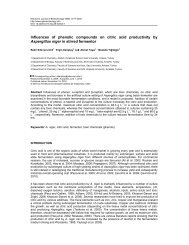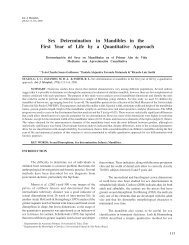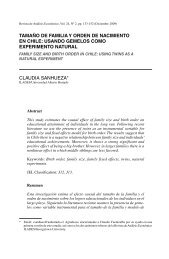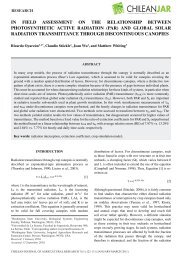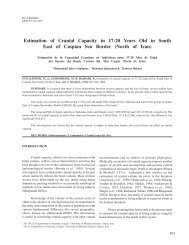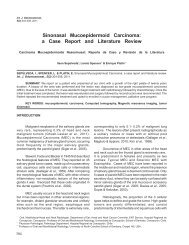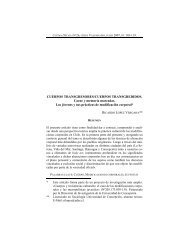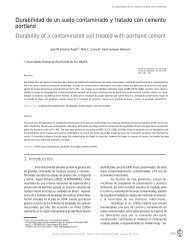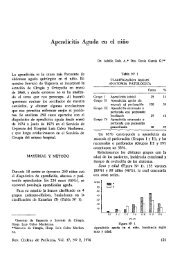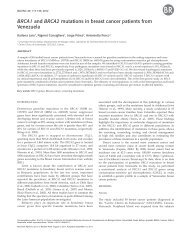using irrigation scheduling to increase water productivity of wheat ...
using irrigation scheduling to increase water productivity of wheat ...
using irrigation scheduling to increase water productivity of wheat ...
Create successful ePaper yourself
Turn your PDF publications into a flip-book with our unique Google optimized e-Paper software.
G. EL AFANDI et al. - USING IRRIGATION SCHEDULING TO INCREASE WATER…<br />
481<br />
Table 7. Percent change in yield and <strong>irrigation</strong> amounts for <strong>wheat</strong> and maize and corresponded <strong>water</strong> <strong>productivity</strong><br />
values in both seasons under B2 scenario.<br />
Wheat (Sakha 93)<br />
Maize (TWC324)<br />
Adaptation<br />
strategy<br />
Change in<br />
yield<br />
Change in<br />
<strong>irrigation</strong><br />
WP<br />
Change in<br />
yield<br />
Change in<br />
<strong>irrigation</strong><br />
WP<br />
% kg m -3<br />
% kg m -3<br />
2006/2007 NP NP 0.85 NP NP 0.45<br />
ES -8 +10 0.68 +1 +15 0.43<br />
I 0 +1 0.86 +1 +2 0.48<br />
ES x I +2 -3 0.91 -4 +6 0.43<br />
2007/008 NP NP 0.79 NP NP 0.43<br />
ES -3 -1 0.77 +9 +10 0.43<br />
I -1 +15 0.69 +9 +1 0.52<br />
ES x I +8 +1 0.92 +8 +6 0.48<br />
ES: sowing either <strong>wheat</strong> or maize 3 wk earlier; I: <strong>irrigation</strong> every 21 or 14 d for <strong>wheat</strong> or maize, respectively; NP: not applicable; ES x I: interaction<br />
between early sowing and <strong>irrigation</strong>; WP: <strong>water</strong> <strong>productivity</strong>.<br />
the problem <strong>of</strong> <strong>water</strong> scarcity commenced, improving the<br />
<strong>productivity</strong> <strong>of</strong> existing <strong>water</strong> resources is an important<br />
aspect <strong>to</strong> produce more food for the increasing population,<br />
especially under climate change conditions. Therefore,<br />
the adaptation strategy <strong>to</strong> be use <strong>to</strong> relief the harm effect<br />
<strong>of</strong> climate change on the growing crops should be easy<br />
<strong>to</strong> implement, with no additional economical costs,<br />
which was the case in our research. For <strong>wheat</strong>, the best<br />
adaptation strategy was early sowing and changing<br />
<strong>irrigation</strong> schedule. Under this situation, a certain amount<br />
<strong>of</strong> <strong>irrigation</strong> <strong>water</strong> could be saved and use in irrigating<br />
new lands <strong>to</strong> contribute in increasing <strong>wheat</strong> production<br />
under climate change conditions. The best outcome from<br />
<strong>using</strong> adaptation strategy for <strong>wheat</strong> could occur under B2<br />
climate change scenario in the second growing season<br />
(less stressful climate change scenario and better growing<br />
conditions). Thus, <strong>wheat</strong> yield could be improved by 8%<br />
with an <strong>increase</strong> in the applied <strong>irrigation</strong> <strong>water</strong> by only<br />
1% (Table 7).<br />
Changing <strong>irrigation</strong> schedule was also an effective<br />
adaptation option for maize, where yield improvement<br />
could occur under climate change condition. Although<br />
the second growing season was more stressful for<br />
the growing maize plants, maize yield was positively<br />
responded <strong>to</strong> <strong>irrigation</strong> re<strong>scheduling</strong> as an adaptation<br />
option under B2 climate change scenario. Maize yield<br />
was improved by 8% with 2% <strong>increase</strong> in <strong>irrigation</strong><br />
<strong>water</strong> (Table 7). Gardner et al. (1985) stated that maize<br />
is characterized by having high <strong>water</strong> use efficiency as<br />
a result <strong>of</strong> high pho<strong>to</strong>synthesis and growth rate under<br />
high light and temperature. That explain why maize<br />
yield positively responded <strong>to</strong> low percent <strong>increase</strong><br />
in the applied <strong>irrigation</strong> <strong>water</strong> under climate change<br />
scenarios.<br />
CONCLUSIONS<br />
Sustainable land and <strong>water</strong> management combined with<br />
innovative agricultural technologies could mitigate<br />
climate change and help poor farmers adapt <strong>to</strong> its<br />
impacts. New knowledge, technology and policy for<br />
agriculture have never been more critical, and adaptation<br />
and mitigation strategies must urgently be applied <strong>to</strong><br />
national and regional development programs. Without<br />
these measures developing countries will suffer <strong>increase</strong>d<br />
food insecurity. The real challenge under climate change<br />
conditions is <strong>to</strong> use adaptation strategies, which should<br />
improved agricultural management practices <strong>to</strong> reduce<br />
the damage <strong>of</strong> climate change on the yield <strong>of</strong> the growing<br />
crops, and in the mean time conserve a certain percentage<br />
<strong>of</strong> applied <strong>irrigation</strong> <strong>water</strong>. Finally, technological<br />
advances in production, including crop improvements<br />
through breeding or planting varieties with higher <strong>water</strong><br />
use efficiency could reduce yield losses <strong>to</strong> a minimal.<br />
RESUMEN<br />
Calendario de riego para aumentar la productividad<br />
del agua en rotación trigo-maíz en condiciones de<br />
cambio climático. Se usó un calendario de riego para<br />
aumentar la productividad del agua en rotación trigo<br />
(Triticum aestivum L.)-maíz (Zea mays L.) en condiciones<br />
de dos escenarios de cambio climático. Tres variedades<br />
de trigo y dos híbridos de maíz se plantaron en un<br />
experimen<strong>to</strong> de campo de 2 años. Se calibró el modelo<br />
CropSyst y se validó para los da<strong>to</strong>s de campo colectados,<br />
luego se usó para evaluar el impac<strong>to</strong> de dos escenarios<br />
de cambio climático (A2 y B2) y tres estrategias de<br />
adaptación (siembra temprana, calendario de riego e


